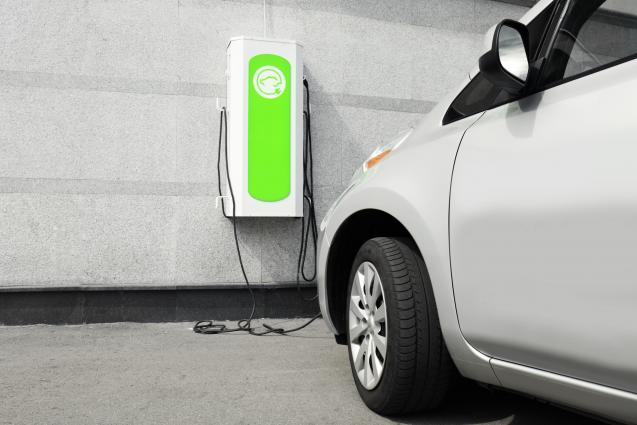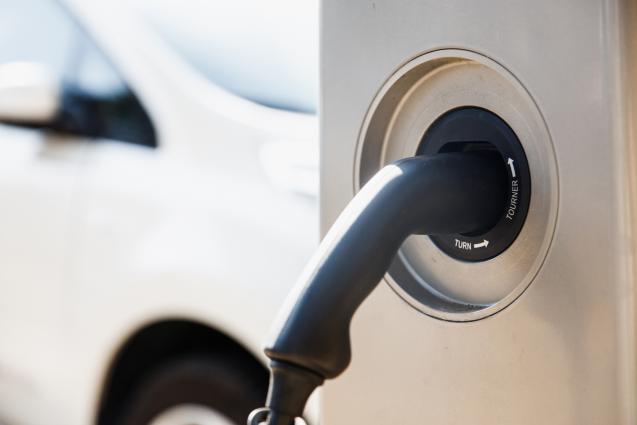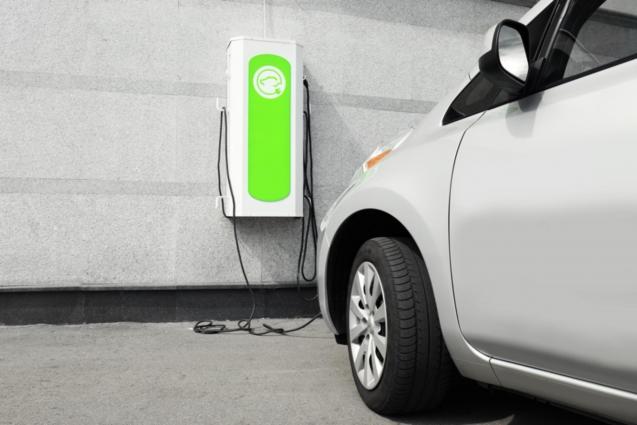
Identifying Electrical Hazards in Older Australian Homes
By Captain Cook Electrical|January 21, 2025
Australia possesses a rich cultural and architectural history, with many older homes ranging from quaint artisan cottages to grand federation homes. Individuals often appreciate older homes for their character and unique architectural features and while such homes are distinctive, they might also harbour potential dangers in the form of outdated electrical systems. A critical aspect of preserving these homes and ensuring the safety of their occupants is maintaining electrical safety, which holds immense significance in preventing mishaps such as fires or shocks. To help homeowners safeguard their properties and loved ones, this article outlines the common electrical hazards found in older homes and provides valuable guidance on identifying these safety risks.
Understanding the Age of Your Home’s Electrical System
The age of your home's electrical system and its maintenance history have a significant bearing on its capacity to function safely and efficiently. Australian homes built during different periods have distinctive electrical system characteristics. For instance, homes constructed in the early 20th century might have original or early-model knob-and-tube wiring, which is not conducive with current safety standards, given its lack of grounding. Outdated fuse boxes, limited power points, or cloth-insulated wiring are typically indicators of an electrical system that hasn't been upgraded in decades. Older wiring systems can escalate the likelihood of electrical faults leading to safety hazards and can also influence insurance cover outcomes. Some insurers may insist on an electrical upgrade as a condition of home insurance coverage, making electrical system maintenance doubly important. It’s essential to remember that the risk associated with electrical components increases over time since wear and tear are inevitable.
Common Electrical Hazards in Older Australian Homes
Understanding the common electrical hazards in vintage homes is an important facet of heritage property ownership. Knob-and-tube wiring, common in pre-1950s homes, was considered innovative during its era but is no match for today's power-hungry devices. It lacks the strength to handle the load of modern appliances and can easily become overloaded, leading to a potential fire hazard. Legacy systems with old-style circuit breakers and fuse boxes, once typical now obsolete, struggle to cope with modern power demands. These outdated components can overheat under pressure, causing a high risk of electrical failures or fires.
Another significant issue arises with outdated home wiring, which may include deteriorated insulation or inadequate grounding. These older systems not only fail to meet the demands of modern households but also increase the likelihood of electrical faults and surges. The absence of proper grounding can pose a threat during power surges, potentially causing electrocution or serious damage to appliances and property. Wear and tear on wiring, outlets, and fixtures over the years can build into a serious threat if not promptly attended to by a professional.
Warning Signs of Electrical Hazards
There are several warning signs homeowners should be alert to when managing the safety of older properties. Visual alerts, such as blackened or scorched power points, are a clear sign of overheating. If you notice a peculiar burning smell near sockets or observe frayed or damaged wiring, it's an immediate indication of a problem needing urgent rectification.
Signature signs of underlying electrical issues include repeatedly tripped circuits and irregular dimming or flickering lights. It's crucial not to ignore any strange, persistent noises emitted from your electrical system. A buzzing or sizzling sound from outlets, switches, or appliances often points to a significant issue, such as short circuits or a worn-out system. Unusual smells like that of electrical burning or heated metal can pre-empt potentially serious problems, providing an opportunity to address them before they escalate.
Preventative Measures for Ensuring Safety
Addressing electrical safety in older homes goes beyond identifying problems. It extends into taking proactive steps to ensure a safe and comfortable living environment. Regular inspections by certified electricians are paramount to gauging the current state of the wiring and electrical systems.
Electricians don't just repair; they assess your home's system and suggest necessary upgrades, including modern circuit breakers and safety switches designed to cope with today's electrical load requirements. Adhering to modern safety standards, such as having sufficient grounding and Residual Current Devices (RCDs), significantly reduces the risk of accidental shocks and deaths due to unforeseen electrical faults.
Education plays a vital role in ensuring continued safety. Homeowners should be aware of essential safety measures such as limiting appliance numbers in power points to avoid overloading, unplugging devices after use, and being aware of how to safely use heating appliances.
Seeking Professional Assistance and Compliance
Managing the historical integrity and safety of older homes demands a blend of careful inspection, regular maintenance, and timely upgrades. A certified, knowledgeable electrician can perform a thorough inspection of the home's electrical system while ensuring modifications are compliant with current standards.
Understanding the local regulations and standards regarding home electrical systems is important for maintaining safety and home insurance compliance. Especially during property purchases, comprehensive electrical assessments are crucial to garner a deep understanding of the home's electrical condition, system capacity and any necessary upgrades. When homeowners demonstrate adherence to current electrical codes and proven safety practices, it often reduces potential risk factors, a factor that can influence the cost of home insurance premiums.
Conclusion
Preserving the beauty and charm of older Australian homes requires more than maintaining aesthetic appeal; it also demands ongoing diligence in identifying and addressing potential electrical hazards. Regular inspections, proactive upgrades and appliance safety education are not just good practices; they're essential steps in ensuring the safety of your family and property. Investing in your home's electrical safety not only delivers peace of mind but protects against the devastating consequences of electrical failures. Engaging professional help and staying informed on the latest in electrical safety is a rewarding investment in your property's safety and longevity. Attending to outdated home wiring is a clear path to securing the assurance that your beloved home is not just a historical gem but also a safe haven.
Understanding the Age of Your Home’s Electrical System
The age of your home's electrical system and its maintenance history have a significant bearing on its capacity to function safely and efficiently. Australian homes built during different periods have distinctive electrical system characteristics. For instance, homes constructed in the early 20th century might have original or early-model knob-and-tube wiring, which is not conducive with current safety standards, given its lack of grounding. Outdated fuse boxes, limited power points, or cloth-insulated wiring are typically indicators of an electrical system that hasn't been upgraded in decades. Older wiring systems can escalate the likelihood of electrical faults leading to safety hazards and can also influence insurance cover outcomes. Some insurers may insist on an electrical upgrade as a condition of home insurance coverage, making electrical system maintenance doubly important. It’s essential to remember that the risk associated with electrical components increases over time since wear and tear are inevitable.
Common Electrical Hazards in Older Australian Homes
Understanding the common electrical hazards in vintage homes is an important facet of heritage property ownership. Knob-and-tube wiring, common in pre-1950s homes, was considered innovative during its era but is no match for today's power-hungry devices. It lacks the strength to handle the load of modern appliances and can easily become overloaded, leading to a potential fire hazard. Legacy systems with old-style circuit breakers and fuse boxes, once typical now obsolete, struggle to cope with modern power demands. These outdated components can overheat under pressure, causing a high risk of electrical failures or fires.
Another significant issue arises with outdated home wiring, which may include deteriorated insulation or inadequate grounding. These older systems not only fail to meet the demands of modern households but also increase the likelihood of electrical faults and surges. The absence of proper grounding can pose a threat during power surges, potentially causing electrocution or serious damage to appliances and property. Wear and tear on wiring, outlets, and fixtures over the years can build into a serious threat if not promptly attended to by a professional.
Warning Signs of Electrical Hazards
There are several warning signs homeowners should be alert to when managing the safety of older properties. Visual alerts, such as blackened or scorched power points, are a clear sign of overheating. If you notice a peculiar burning smell near sockets or observe frayed or damaged wiring, it's an immediate indication of a problem needing urgent rectification.
Signature signs of underlying electrical issues include repeatedly tripped circuits and irregular dimming or flickering lights. It's crucial not to ignore any strange, persistent noises emitted from your electrical system. A buzzing or sizzling sound from outlets, switches, or appliances often points to a significant issue, such as short circuits or a worn-out system. Unusual smells like that of electrical burning or heated metal can pre-empt potentially serious problems, providing an opportunity to address them before they escalate.
Preventative Measures for Ensuring Safety
Addressing electrical safety in older homes goes beyond identifying problems. It extends into taking proactive steps to ensure a safe and comfortable living environment. Regular inspections by certified electricians are paramount to gauging the current state of the wiring and electrical systems.
Electricians don't just repair; they assess your home's system and suggest necessary upgrades, including modern circuit breakers and safety switches designed to cope with today's electrical load requirements. Adhering to modern safety standards, such as having sufficient grounding and Residual Current Devices (RCDs), significantly reduces the risk of accidental shocks and deaths due to unforeseen electrical faults.
Education plays a vital role in ensuring continued safety. Homeowners should be aware of essential safety measures such as limiting appliance numbers in power points to avoid overloading, unplugging devices after use, and being aware of how to safely use heating appliances.
Seeking Professional Assistance and Compliance
Managing the historical integrity and safety of older homes demands a blend of careful inspection, regular maintenance, and timely upgrades. A certified, knowledgeable electrician can perform a thorough inspection of the home's electrical system while ensuring modifications are compliant with current standards.
Understanding the local regulations and standards regarding home electrical systems is important for maintaining safety and home insurance compliance. Especially during property purchases, comprehensive electrical assessments are crucial to garner a deep understanding of the home's electrical condition, system capacity and any necessary upgrades. When homeowners demonstrate adherence to current electrical codes and proven safety practices, it often reduces potential risk factors, a factor that can influence the cost of home insurance premiums.
Conclusion
Preserving the beauty and charm of older Australian homes requires more than maintaining aesthetic appeal; it also demands ongoing diligence in identifying and addressing potential electrical hazards. Regular inspections, proactive upgrades and appliance safety education are not just good practices; they're essential steps in ensuring the safety of your family and property. Investing in your home's electrical safety not only delivers peace of mind but protects against the devastating consequences of electrical failures. Engaging professional help and staying informed on the latest in electrical safety is a rewarding investment in your property's safety and longevity. Attending to outdated home wiring is a clear path to securing the assurance that your beloved home is not just a historical gem but also a safe haven.



